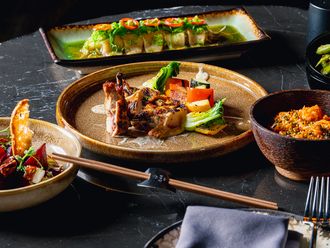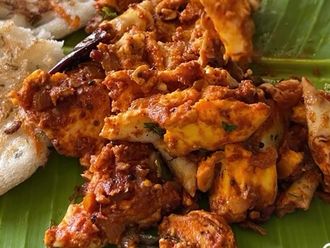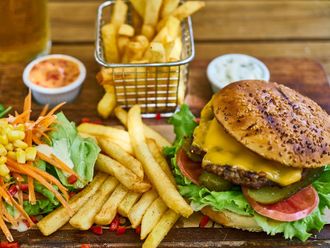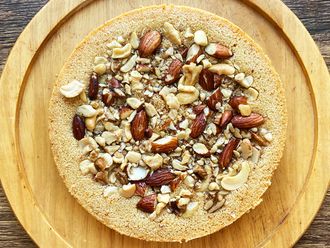Sixty restaurants. 11 countries. Chef Richard Sandoval’s culinary career is like a masterclass in food entrepreneurship.
Recently in Dubai to catch up with his signature restaurant chains in the UAE - Maya and Toro Toro, Gulf News Food had a quick sit down with the famed chef, who has put elevated Mexican cuisine on the world map, to understand what lessons are key to running a successful restaurant business.
“I’ve been coming here for 17 years. Someone called me from Dubai and asked me if I would be interested in coming to open a Mexican restaurant. I have always liked to be part of current things, evolving things and Dubai to me was very intriguing. So they flew me to Dubai, I came and saw what was happening and I agreed to do Maya.
“My experience in Dubai has been amazing. We’ve been in business for 15 years now, so people have really embraced what we do. The city has been great to us. I like coming here, it just keeps evolving.”
Lesson 1: Palate
“My personal journey started in Mexico City. I was born and raised there. At a very young age. I spent a lot of time in my grandmother’s house, and many things in our culture in Latin America revolves around food and family gatherings. Therefore, at a very young age, without me knowing, my palate was already being formed for what my future career was going to be. Living with my grandmother and grandfather, he was a banker; there was a lot of entertaining going on in their house, many imported foods consumed. I got a head start because at a very young age I tasted many of these imported cheeses, butters and foods that a young child, not necessarily, would be introduced to.
“This was when I was around 9 and 10 years old, when I was living at their house and my grandmother had these amazing cooks, who would bring me to the kitchen, sit me up on the counter, and me smelling and tasting and looking at all these wonderful ingredients. My parents were divorced, so I spent a lot of time with my grandparents at their house.
“Even as a young kid, tasting mole, which is a chocolate and chillies sauce, I was intrigued. My grandma had a huge house. The kitchen was almost like a restaurant kitchen. There were two or three women cooking, making handmade tortillas … to me it was all very interesting.
“Mexican cuisine is very ingredient driven. It is all farm to table. Take corn … out of corn we make tortillas, we make sauces, we make a lot of different things, take chillies there may be 1000 different types of chillies - depending on how you cook it, use it, you get very distinct flavours.
“I was always attracted to the variety of ingredients, the boldness and flavor profiles that I understand today, didn’t understand then, but understood that you had sweet, you had spicy etc….”
It was very interesting working with my father but also very helpful, in the sense that I learned the restaurant business. Not just the cooking side of it. Working with my father, I learned that a restaurant is a business and understood numbers, while I was cooking.
Lesson 2: An epiphany, a reason
Sandoval wanted to be a professional tennis player, so at the age of 13 he moved from his grandparents’ home in Mexico to southern California in the US.
“I didn’t know much about the country or American foods and missed Mexican food … things I had eaten back home. I was in middle school, and I would go to the cafeteria and check the menu. One day I saw that they were going to have some tacos. I got very excited but once I got to the cafeteria and saw this hard shell Dorito-looking thing, and thought, ‘Wow what is this? This is what they call a taco here! If I could only teach people and let them see what Mexican food is really about. What we serve in Mexico versus what you see here [US] that would be pretty amazing!’”
He continued playing collegiate tennis and then the professional circuit, but a point arrived where he had to make a choice – he could continue to stay on the tennis circuit, teach tennis or try a different career.
Sandoval decided to go back to his roots. “A that point I chose to go to culinary school cause my father was in the restaurant business in Acapulco. He owned the iconic Madeira’s.
“I was in my early twenties. I graduated from Culinary Institute of America in upstate New York and moved back to Mexico, to work with my father.
“Soon I opened an Italian restaurant for him Villa Fiore and then after four years decided to move to New York City and start my own restaurant.
“Growing up in my grandmother’s house and integrating that with a real restaurant was very interesting for me - house cooking versus restaurant cooking.”
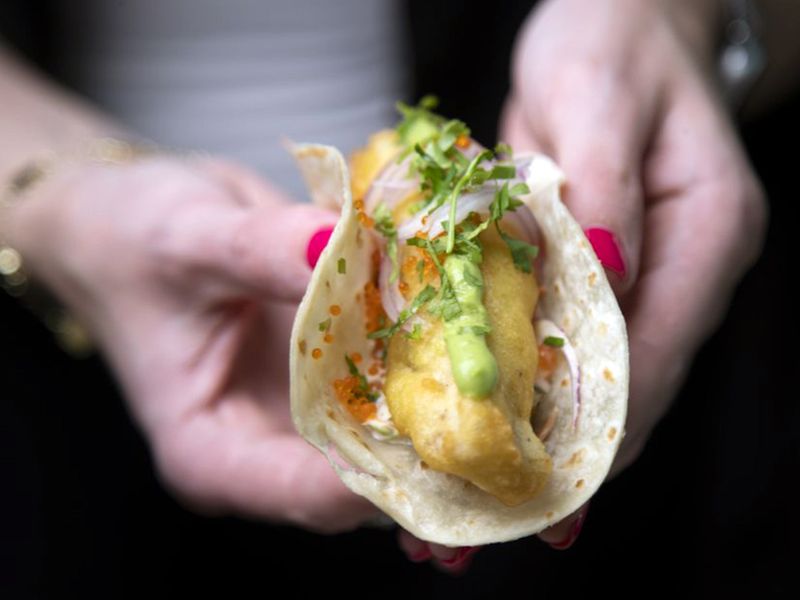
Lesson 3: Getting the right training and breaking barriers
“It was very interesting working with my father but also very helpful, in the sense that I learned the restaurant business. Not just the cooking side of it. Working with my father, I learned that a restaurant is a business and understood numbers, while I was cooking. That set down my foundation.
“It was an amazing learning platform. Most people at 23 or 24 years are very scared, the age when I opened my first restaurant but having that training from my father was very helpful for me.
“My first restaurant in New York was called Savann, a mix of American with European techniques and some Mexican ingredients. Mexican food in America was seen as very casual, very Tex Mex.
“I started to learn about how people viewed Mexican food, which led to my third restaurant Maya, my Mexican restaurant which got us two stars from the New York Times. First restaurant was a learning process, which segued into what I wanted to do, which was Mexican, which was Maya.”
It was a turning point in his career. It became the most well-known Mexican restaurant but proved to be a constant challenge because the cuisine was viewed by most as being more casual dining.
“I was elevating the cuisine and people could not connect and understand why they would go to Maya and spend $50 dollars when they could go to a smaller restaurant and spend $12. My explanation to that was to compare me to the best French or Italian restaurant - we are using the same proteins.
“So instead of using truffles I am using Huitlacoche [pronounced whee-tla-ko-cheh], which is Mexican truffle, instead of thyme I am using cilantro, and instead of crème fraiche I am using crema fresca. I am using the same creativity with Mexican ingredients. Once people started connecting and understanding it, it became very popular. I think it was the start of the evolution of modern Mexican cooking in the US.”
Lesson 3: Keep learning and understand your consumer’s tastes
“My journey in the kitchen was very different from other chefs who go to school then work in kitchens, travel the world….
”I went straight from culinary school and working with my father, to being an owner right away. It was very different but it also gave me an opportunity to do more research, because I wasn’t getting that research by working in other restaurants. I was reading a lot, travelling a lot, to see many different things.
“It’s definitely been a journey - one restaurant at a time, one country at a time. I did not move to New York to own 60 restaurants. It grew organically.
“One of the most important lessons I learnt from my father is how important it is to be fundamentally sound in business. At the end of the day we can all cook, we can look at a recipe, we can all taste ingredients but if you don't understand the business side of your restaurant, you more than likely will not succeed. That's why today if you look at the odds of the restaurants that close versus that succeed are very high.
“As chefs we think it all about the food, while it is about the food, we do really need to understand the business fundamentals to be successful.
“Personally, I think the key to my success today is the food - I have created a style. A lot of people think that's the way I like it, so that's the way it needs to be. That's not how it works, you need to cook for your audience and understand flavour profiles to make people's journey through their plate a rollercoaster of flavours. Therefore, you get the acids right, the sweetness, the heat, and today people are looking for these contrasts and the boldness of flavours.
“In people's homes, whether it is a housewife or cook, they cook with their palate. They are always tasting and seasoning accordingly. We forget that sometimes. We take a recipe and use it as is, but we are forgetting that ingredients are always changing - you always have to taste and season accordingly.”
Lesson 4: Educate your consumer
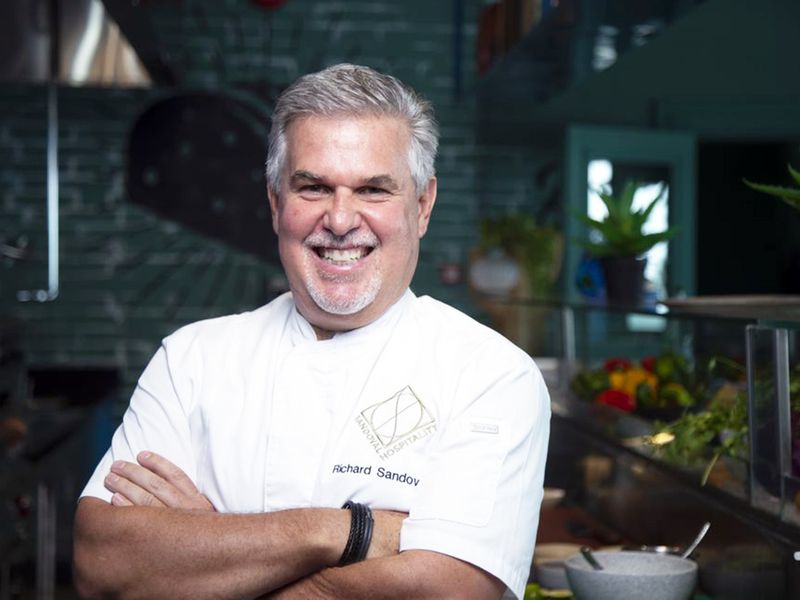
“One of the challenges I have had with Mexican food … people still order burritos and nachos. It is up to us chefs and restauranteurs to change that perception. I have dedicated my last three years to promoting this diversity – Mexican food is not just burritos, fajitas and tacos. It is a part of it but not the only part of it.
“Obviously there is a shift and Maya is an example that there is a shift and openness to experience a different kind of Mexican food. However, there is still a huge amount of room for people to see what Mexican food and what our culture is really about.
“For example chillies … one of my favourite ingredients are chillies because I think they do so much to a dish. They add heat, they also add smokiness. There are so many different types of chillies, and each different type of chilli can play and taste differently, depending on whether it is fresh, whether it is smoked or dry. For me as chef to have so many different ingredients you know as chillies in my repertoire makes it really cool when I am creating something.”
Lesson 5: Be careful how you use social media
“I think cooking will always survive, will always be around. We have gotten away from it because of social media, where when it is palate versus a picture, it's a picture. People are always taking pictures of food and then sending them off to people. People are more in the visual dimension rather than in the actual flavour.
“But, I am successful because I am a chef who is still very interested in ingredients and flavour profiles versus just presentation.
“I think social media is a double-edged sword, for example you open a restaurant, a lot of influencers come in, and they have a lot of followers. They can communicate to many people to bring in business. However, what people don't understand is that in a restaurant it is like an engine, like an orchestra, there are so many moving parts - you have servers, bartenders, cooks, you have ingredients, you have flavours, there's so many things.
“Sometimes people come in and judge you really fast, I think a restaurant is a process that takes five to six months to get the orchestra flowing. While it helps, I think it is somewhat detrimental to our industry.”
Share your favourite food stories and recipes with us at food@gulfnews.com




